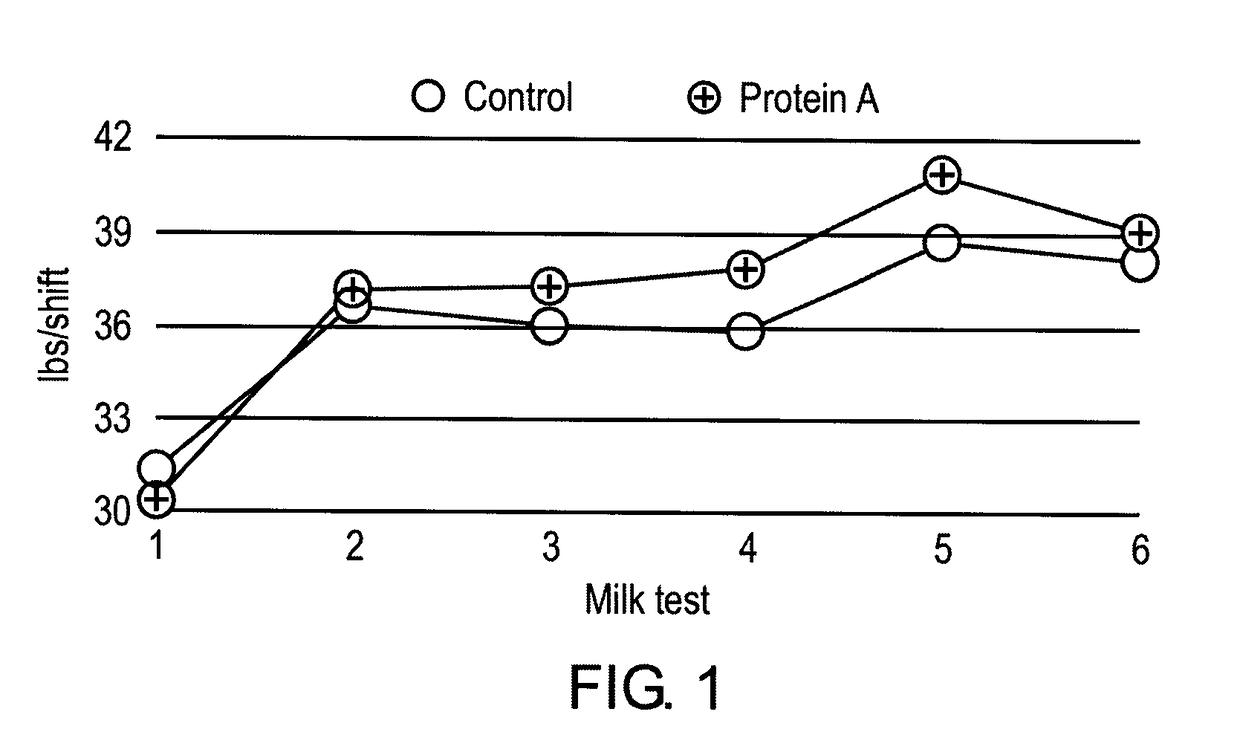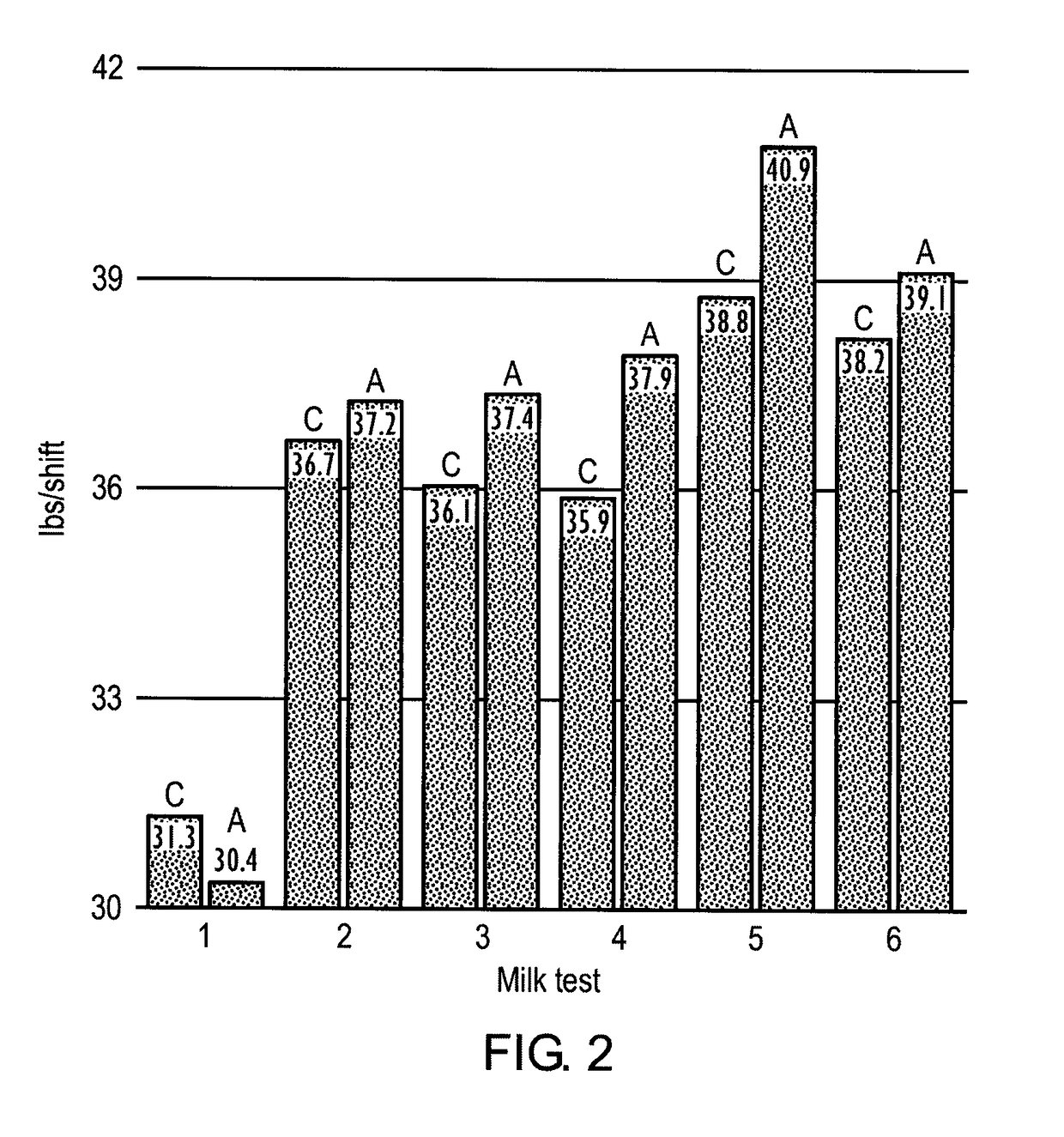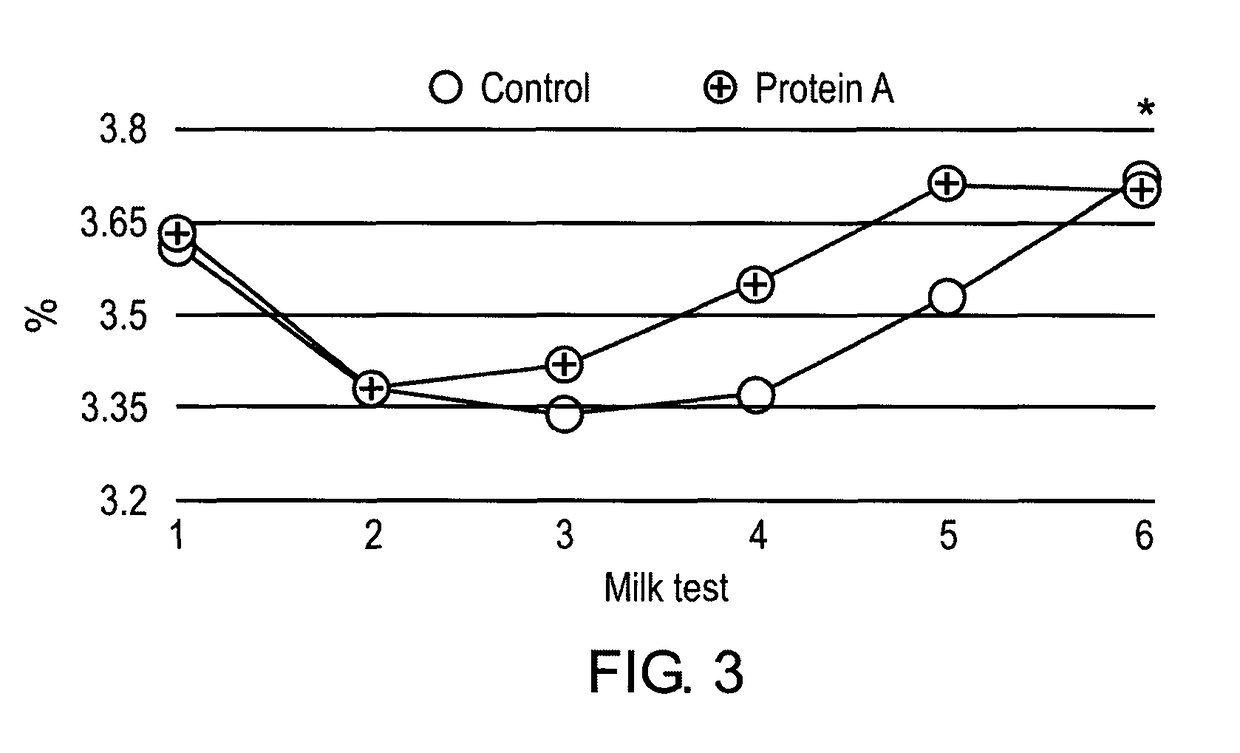Method for increasing milk production by ruminants
a technology for ruminants and milk, applied in the field of ruminant milk production increase, can solve the problems that the antigen neutralization of antigens in the gut lumen does not fully explain the improvement observed in animals fed plasma proteins, and achieves the effects of reducing the ph of the plasma, promoting clotting, and no longer corroding separation equipmen
- Summary
- Abstract
- Description
- Claims
- Application Information
AI Technical Summary
Benefits of technology
Problems solved by technology
Method used
Image
Examples
example 1
Objectives
[0043]To determine the impact of granular spray-dried bovine plasma (SDP, Appetein®, APC, Inc., Ankeny, Iowa, named in this example as Protein A) supplementation at the level of about 0.5-2 wt-% of dry matter intake (feed) during the immediate pre- and post-parturient periods on early lactation reproductive performance and milk production.
Materials & Methods
[0044]A total of 998 dairy cows from one large herd in the Western US were blocked on the basis of parity and randomly assigned to one of two treatment groups at calving:
[0045]Group 1 (T or Trial Code=1) received a total mixed ration (TMR) supplying 200 or 400 g / d of protein A before or after calving respectively (n=495) as shown on Tables A and B.
[0046]Group 0 (C or Control Code=0) served as a control group, receiving the same TMR but control protein (blood meal) supplementation. As shown on Tables A and B. This TMR contained blood meal and thus rations were easily balanced to achieve isonitrogenous levels with the tre...
example 2
[0078]Four replications of Tilley-Terry incubations, each using 3 different rumen liquids from three rumen-cannulated cows were conducted to assess rumen fermentation and microbial changes, compared to an unsupplemented Control, induced by:[0079]Spray-dried plasma (SDP) (Appetein®)[0080]Spray-dried high hydrolyzed hemoglobin (SDHHH)[0081]Urea 98% (Urea)[0082]Soya[0083]Yeast XPLS #151010 (Yeast)[0084]Spray-dried red blood cells (SDRBC)
[0085]Rumen liquids were diluted to 10:40 and were supplemented (including the control) with 1% corn meal. All protein sources were supplemented to provide 2% N.
[0086]Incubations lasted 16 h, under continuous shaking (150 rpm), 5% CO2 and 39° C.:
Sampling:
[0087]Concentrations of Gram negative and Gram positive bacteria were measured.
Results
[0088]The use of plasma proteins (SDP) has no effect on change in pH in the rumen of dairy cows.
[0089]SDHHH, a hydrolyzed product, had positive effects on increased rumen pH as happened with Yeast, Soya and plasma prot...
PUM
| Property | Measurement | Unit |
|---|---|---|
| outlet temperature | aaaaa | aaaaa |
| outlet temperature | aaaaa | aaaaa |
| particle size | aaaaa | aaaaa |
Abstract
Description
Claims
Application Information
 Login to View More
Login to View More - R&D
- Intellectual Property
- Life Sciences
- Materials
- Tech Scout
- Unparalleled Data Quality
- Higher Quality Content
- 60% Fewer Hallucinations
Browse by: Latest US Patents, China's latest patents, Technical Efficacy Thesaurus, Application Domain, Technology Topic, Popular Technical Reports.
© 2025 PatSnap. All rights reserved.Legal|Privacy policy|Modern Slavery Act Transparency Statement|Sitemap|About US| Contact US: help@patsnap.com



